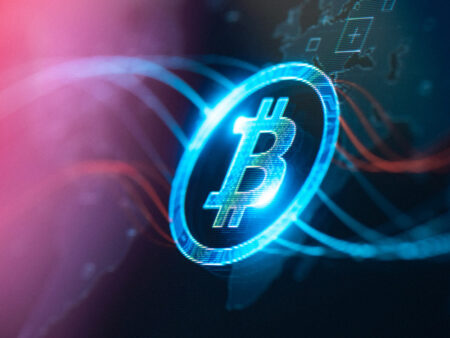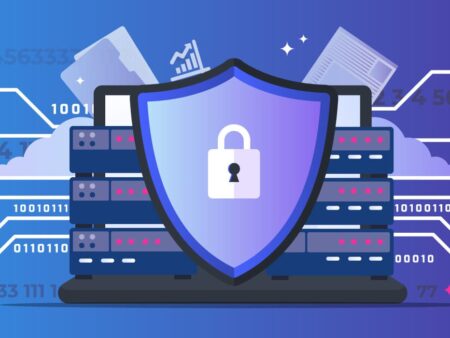If you’re a newcomer to the world of Blockchain, you may be wondering, “What is Blockchain Security?” This article will explain how this decentralized database keeps data secure and why it’s vulnerable to cyber-attacks. To start, Blockchain uses a digital signature for secure transactions. In addition, because blocks are made up of multiple computers, it takes a tremendous amount of computational power to forge one block in the network.
Blockchain is a decentralized database
One of the most important benefits of using a blockchain is that it has no central governing authority. This allows everyone, regardless of backgrounds, to use the database. Currently, nearly 1.7 billion adults around the world do not have a bank account or any other method of storing wealth. These individuals typically live in developing nations that lack traditional banking systems and are highly dependent on cash. A blockchain can help to solve these problems by preventing cyber criminals from gaining access to health records and other sensitive information.
Another benefit of a blockchain is its speed. Typically, transactions placed through a central authority take days to settle. For example, a deposit check deposited on a Friday could take until Monday morning. A blockchain transaction can take as little as 10 minutes, and can be considered secure after just a few hours. This is especially useful in cross-border trades, where payment processing may take several days because of time zone differences. In addition to speeding up transaction times, a decentralized database is also more secure than a centrally controlled database.
Unlike traditional databases, which are based on client-server architecture, blockchain uses a peer-to-peer network to store information. Nodes on the network are connected through secure cryptographic protocols to communicate with one another. These nodes collectively participate in a consensus algorithm, known as Proof-of-Work, which requires miners to solve a complex mathematical equation to produce a blockchain. By requiring this type of system, users can trust that their data is secure and that no third party can change their data without permission.
It uses a digital signature to secure transactions
One of the most important parts of blockchain security is the digital signature. This is a unique string of characters that is used to verify the authenticity of a message. Using an algorithm known as hashing, it ensures the message’s integrity. Only the intended recipient can decrypt the message. A digital signature also verifies a sender’s identity. The recipient can only read a message if it contains a digital signature from the sender.
A digital signature has a few benefits. This form of security is extremely reliable, and it prevents forgeries by verifying the owner of an account or fund. It also protects against data forgery, which is a common threat in the world of finance. Those benefits make this technology a great choice for securing transactions in the blockchain space. Its ability to verify the identity of the sender and recipient is essential for the blockchain to be as secure as possible.
The blockchain can help prevent contamination. There have been countless instances of hazardous materials being accidentally introduced into foods. In the past, food companies took weeks to trace the source of an outbreak. Now, brands can easily track the exact path their food products have taken from their source to their final destination. Moreover, Blockchain can be programmed to generate events, systematic actions, and even payments automatically. So, there’s no need to be a lawyer to secure a transaction.
It requires high computation to forge a block in the network
The process of forging a block in the blockchain network is based on a high-computation algorithm that prevents a single node from obtaining more than one share of the computing power in the network. This ensures that only those nodes that have access to enough computational power can forge a block. Once a block is created, it is permanently stored in the blockchain network, where it can never be altered. Changing any information in a block requires a high-computation algorithm, so it is difficult to accomplish without a high-level network.
It is vulnerable to cyber-attacks
While blockchain is hailed as unhackable, recent studies show that it is still prone to cyber-attacks. In June 2016, criminals took advantage of a vulnerability called recursive calling to take control of a distributed autonomous organization (DAO) and steal $60 million in bitcoin. They also exploited a transaction mutability vulnerability to shut down the Bitcoin exchange MtGox, stealing $450 million worth of digital currency.
A 51% attack is where a majority of network participants conspire against a small minority of users. In the case of a blockchain, hackers can make real nodes slow down or even become non-responsive. In another attack, attackers could make slowloris peers – real peers that communicate slowly – hold resources and sockets for hours. The CSA is working to improve blockchain security. Visit its Blockchain working group webpage to learn more about their plans.
A phishing attack is a method of gaining access to a device by using false links and emails. Once the user’s credentials are compromised, the attacker can steal the funds, which in turn can damage a blockchain network. Because blockchains depend on large, real-time data transfers, hackers can intercept data during transmission. They can also hijack IP prefixes and drop connections, preventing the network from reaching consensus.
It is a universal force in organizations worldwide
As the Internet of Things becomes more complex, cybersecurity is a major concern. Blockchain has the potential to make global transactions secure and decentralized. Companies are starting to realize the benefits of this technology, and many are already testing its capabilities. One of the most important applications for blockchain is in the military, where data can include mission coordinates, identifiable employee information, and new technologies. By integrating blockchain cybersecurity protocols into the security of military data, organizations can improve data security and protect sensitive information.
As the privacy of medical data continues to increase, many are concerned about hacking attacks. While hackers and rogue employees have a long history of hacking healthcare data, blockchain is a way to keep your data secure. While the technology has many benefits, it can also pose some significant risks. A rogue hacker could compromise your data and create a false patient record. This is particularly concerning for healthcare organizations, as healthcare data is extremely sensitive. Unintended privacy breaches are a huge risk.
Many large banks are now taking notice of the security protocols for blockchain. While Wall Street is traditionally slow to adopt new technologies, blockchain technology has the potential to make cybersecurity a priority for organizations. Bank of America and JP Morgan have recently announced that they are evaluating blockchain for their cybersecurity needs. Despite this lack of progress, it is important to remember that security protocols are only as effective as the technology behind them.
It is in its infancy
The use of blockchain in education is still in its infancy and only a handful of institutions have adopted the technology. According to a Gartner survey, only 2% of institutions were currently using the technology and another 18% plan to do so in the next two years. However, the potential for blockchain to transform higher education is enormous. Let’s take a closer look at how blockchain can make this potential transformative technology more useful to higher education.
Because blockchain technology is unalterable, security in this technology is a critical issue. Developers must take a proactive approach to securing their systems, ensuring that no unintended or malicious users can alter them. For example, contract vendors must establish policies around consumer protection. Smart-contract developers should also consider methods for handling security incidents. There is an ongoing effort to make blockchain software more secure. It’s a new technology that requires new ways of reasoning.
While blockchain security is in its infancy, it has great potential to transform global supply chains and improve international border crossings. But the researchers aren’t quite sure how this technology will develop. According to Weidong “Larry” Shi, associate professor of computer science at the University of Houston, blockchain is a decentralized technology that records transactions in a way that is public and resistant to manipulation.






